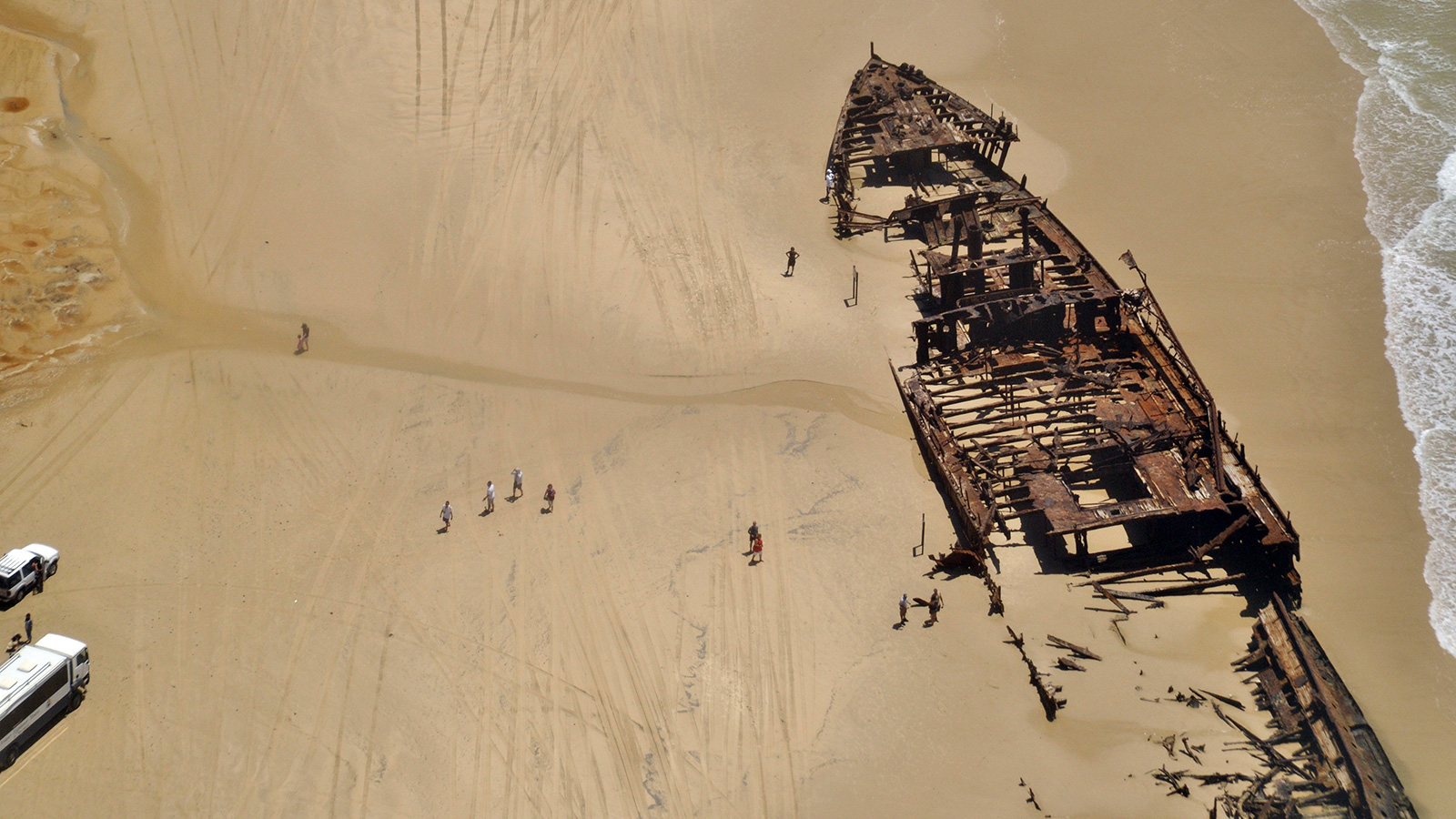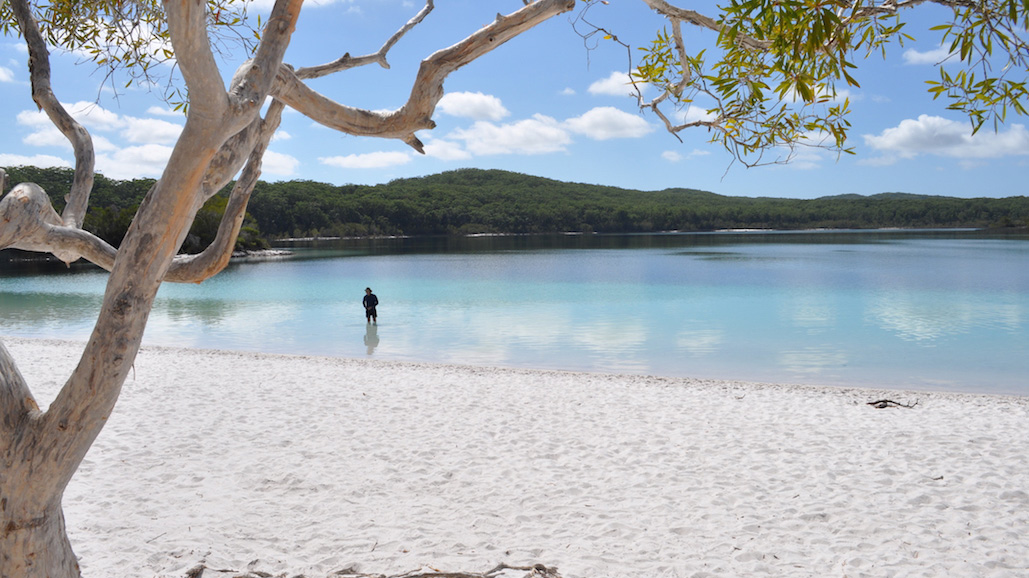He has noticed some concerned expressions as we pass the mouth of the Mary River where it flows into the Great Sandy Strait south of Hervey Bay. Many aboard hail from the UK and the river’s gravy-coloured waters are disturbingly reminiscent of the Thames back home.

Fraser Island
The water does become bluer during our 50-minute trip across the strait, but it’s a visual reminder that, while Fraser Island might be off the coast of Queensland, it’s more than 800km south of the Whitsundays and has a sub-tropical rather than tropical climate.
We disembark at Kingfisher Bay Resort, which is on the south-western side of the island, and take the golf-cart train to reception. This is my son’s undisputed highlight of the trip and he’s still talking about the “green bus” a week later.

Whereas many Whitsundays resorts are about landscaping, luxury and coral reefs, Kingfisher feels like a tropical resort dropped into the Australian bush. On arrival, we follow a timber boardwalk to our room, get settled, and then head back to the bar for some afternoon refreshment (it’s late February and, in summer, sub-tropical feels decidedly tropical).
Once we’ve quenched our thirsts, my wife buys some provisions at the little shopping village across from reception while the kids enjoy the nearby play equipment.
Dinner at Maheno Restaurant is to the raucous accompaniment of wallum rocketfrogs, and we spot one of the amphibious choir by the pool. He isn’t fazed as we approach for a closer look; in fact, we get so close we can see his vocal sac ballooning in and out with each note.
On our way to breakfast the next morning we encounter a lace monitor sauntering away into the scrub. It’s another reminder that Fraser Island is largely ‘untamed’. We’re about to find out just how untamed as we join ranger Megan Wilson for a personal tour of the island. Megan left her hometown of Broken Hill at 19 and tried living in the Thredbo area for a while before finally discovering home and happiness on Fraser. She knows every square inch of the island and can rattle off facts and figures about its history, geography and wildlife.
The animals everyone wants to know about, of course, are the dingoes. These days, Fraser’s resorts are fenced off, the island’s dingo population is closely monitored, and visitors are adjured not to leave food lying around, which can attract the animals and lead to dangerous encounters.
“I think there are about four or five campgrounds that are fenced, and the others are open, so anyone with children up to 14 are recommended going in the fenced camping areas,” Megan explains.










